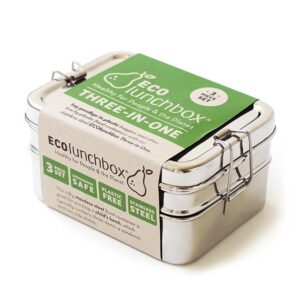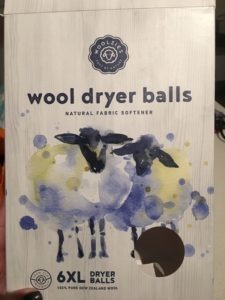- October 31, 2019
- 0 Comments
- In Miscellaneous
- By Steven Winter Associates
In a world where everything seems to be packaged in two layers of plastic, where we are encouraged to constantly discard items to make room for new ones, and where social media drives our desire to consume the newest trends, it can seem impossible to reduce our waste. Living a zero-waste lifestyle seems almost too overwhelming. I find myself wondering, “How can I possibly reduce waste when industries target consumers to do the opposite?” and “Even if I do make changes in my own habits, is it enough to make a difference?”
I struggle with the same paralyzing vastness that Jonathan Chapman mentions throughout his book Emotionally Durable Design. Paralyzing vastness describes the tendency to do nothing when a task seems too large to conquer, instead of taking smaller steps. In the past, the seemingly vast nature of zero-waste living discouraged me from doing anything beyond entry-level recycling, but I realized that minimizing my waste is something worth tackling. Therefore, I will be sharing some ideas for working towards a zero(ish)-waste lifestyle — because going from zero to one hundred, or in this case one hundred to zero can be scary — and I’ll include my experience implementing a few of the ideas myself.
WEEK ONE: Apartment Composting
In blogs and articles that speak on behalf of zero-waste living, the importance of sharing with others and asking for help getting started is most frequently emphasized. For example, my apartment complex does not offer any composting services, but the SWA office does (yay sharing!). For week one, I started composting and designated two small resealable containers — one for food waste, and another for paper towels — that are now living on my kitchen counter. I intended on utilizing these two bins throughout the week, and then bringing them to the office for a dump. If you have the ability to start your own compost bin, that’s great too.
While using paper towels throughout the week, I felt less bad about it knowing that they wouldn’t be going into the landfill, but I developed some questions: If I use the paper towel with cleaning supplies, can it be composted?… Is it worth collecting small bits of food waste when I could just eviscerate them in the garbage disposal?… Are garbage disposals bad for the environment and/or do they affect the energy utilized for wastewater treatment?
As it turns out, paper towels with grease on them and paper towels that have been used with ANY cleaners can NOT be composted. This is because the good bacteria that help in the composting process could be affected. And while an article written for Slate explains that composting should be utilized as much as possible, at the same time, it is fine, for the most part, to send food down the garbage disposal (as long as we are conscious of the extra water we use to flush the system), which is a better option than sending anything via garbage trucks to the landfill,
After heading into week two and forgetting to take my compost in the office, I effectively grew mold in my kitchen and will be starting fresh with a more properly sealed container and more regular dumping.
Takeaway: To get started with zero-waste living, utilize whatever resources are available to you, and ask for help when needed. When composting, be conscious of what you are using your paper towels for and whether or not they can be composted. If composting is an option for you, compost whenever possible! A zero-waste alternative to paper towels: repurpose old towels or sheets into washable rags for the kitchen.
WEEK TWO: Waste Inventory
It is hard to start thinking about zero-waste and not want to replace everything you own with more eco-conscious products; however, slow and steady wins the race. It is important to keep in mind that zero-waste doesn’t have to look the same for everyone — it’s all about making small changes. Besides, a full haul would be EXPENSIVE.
With that said, I recommend taking an inventory of single-use products you use most often, thinking about which items or habits make the most sense to replace, and starting there. Below are a few single-use products with comparably priced multi-use replacements.
Dryer sheets: Dryer sheets were one of the single-use products that I decided to replace myself. While I do want my clothes to be static and wrinkle free, I wanted to explore an alternative that does not contain chemicals (you’d be surprised what’s in dryer sheets) and that also lowers waste. Wool dryer balls boast all the same dryer benefits as dryer sheets; however, they do not use any chemicals AND they supposedly help clothes dry faster. I researched a variety of brands and ended up ordering Woolzies dryer balls. I paid $16.95 for six balls that are meant to last for at least 1000 loads. Comparably, Bounce brand dryer sheets that I was using cost approximately $50 for 1000 loads, making this a worthwhile experiment for me. While I didn’t notice much of a difference in the drying time of my clothes, the wool dryer balls do seem to reduce some static. I do not miss the dryer sheets at all.
 Takeout Food Containers: This doesn’t necessarily mean containers for food we order on our lunch break, because it can be hard to control what kind of container the food is being put in (unless you are willing to hand off a container to the person behind the counter). Instead, this could mean bringing a container with you to your favorite restaurant for the second half of your meal, not using plastic bags for produce in the food store, opting to pack snacks in containers instead of zippered plastic baggies, etc. Reusable tote bags and produce bags are great tools to limit waste while food shopping.
Takeout Food Containers: This doesn’t necessarily mean containers for food we order on our lunch break, because it can be hard to control what kind of container the food is being put in (unless you are willing to hand off a container to the person behind the counter). Instead, this could mean bringing a container with you to your favorite restaurant for the second half of your meal, not using plastic bags for produce in the food store, opting to pack snacks in containers instead of zippered plastic baggies, etc. Reusable tote bags and produce bags are great tools to limit waste while food shopping.
Stainless steel is a great alternative to plastic for reusable containers. This reusable lunch box ($36) is great for compartmentalizing food and snacks; however, using what you already have is always the best (and most inexpensive) option. A few more examples of single-use items with zero-waste alternatives include plastic water bottles, plastic utensils, single serve coffee pods, etc.
WEEK THREE: Hygiene Products
Bathroom hygiene, especially feminine hygiene, is not often discussed from a waste standpoint, and historically, is are taboo subjects. The production of feminine products is not only resource intensive, but chemically intensive as well. According to an article written for National Geographic, it is difficult to quantify just how much plastic waste comes from menstrual products because they are categorized as medical waste and therefore do not need to be tracked. However, it is approximated that every woman uses tens of thousands of these products throughout her lifetime—most (if not all) of which will end up in landfills as plastic waste. The taboo nature of the subject has led to products being integrated with more and more plastic, aimed at making products more discrete. More sustainable, zero-waste alternatives are gaining popularity — hopefully opening the discussion about healthier products for us and the earth. Disposable cotton products and all organic options are now available as are reusable options for comparable costs.
In general, most bathroom hygiene products are typically disposable by nature including toilet paper, plastic cotton swabs, disposable razors, dental floss sticks, paper cups, etc. Investing in a stainless-steel safety razor, refillable dental floss, recycled toilet paper, and reusable or compostable cups and swabs are all ways to decrease your waste stream in the bathroom!
WEEK FOUR: Energy Waste
Most zero-waste discussions include ways to lower consumption of single-use products, but in our homes and work spaces, energy waste is an important issue as well. Most of us are tied to a grid that is not powered on renewable energy. Of course, no individual can single handedly change grid infrastructure to run on renewable energy, and not everyone can install PV or wind systems in their home; however, everyone DOES have the power to reduce energy waste in their homes. And reducing energy utility bills is always a plus.
Ghost Power: According to a study by the Natural Resources Defense Council, up to one-quarter of all consumed residential energy in Northern California is being used by devices on idle power mode, and this is reflective of the rest of the U.S. as well. Everything from your bedside phone charger to your TV to your toaster oven are constantly draining power, even when they are not in use. The easiest way to eliminate the power being drawn by media appliances such as your TV, cable box etc. is to plug into a power strip that has an on-off switch. Then, not only are these items protected from power surges, but they can also be powered completely off when not in use with the flip of one switch. Similarly, power strips can be used in the kitchen for coffee makers, toasters, and other small appliances.
Heating and Cooling: Depending on your personal comfort levels, you might leave your thermostat at a constant 75ºF or you might leave your windows open until the middle of December. Regardless, understanding your energy use related to the heating and cooling loads of your home is important. The general rule of thumb for saving energy is based on occupancy. If no one is home during the day, decrease the temperature difference between inside and outside within reason, and then set the temperature back when you return home. Decreasing the temperature difference by lowering the thermostat in the winter and raising it in the summer makes it more difficult for conditioned air to escape from your home, which would otherwise cause the HVAC system to work harder. With a programmable thermostat, setting schedules is easy to do. With a manual thermostat, making the thermostat a part of your morning and evening routine will help you save energy — phone, wallet, keys, thermostat.
Written by Kate Doherty, Building Systems Analyst


